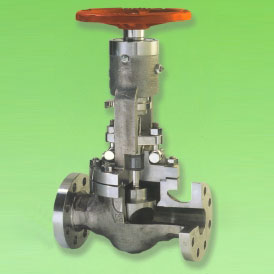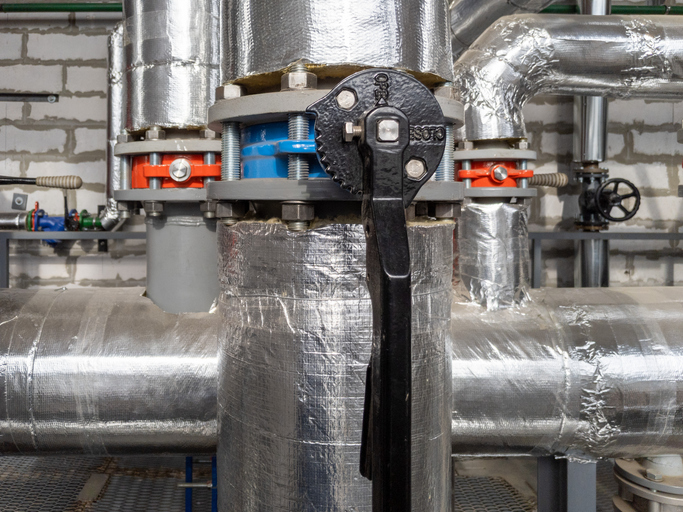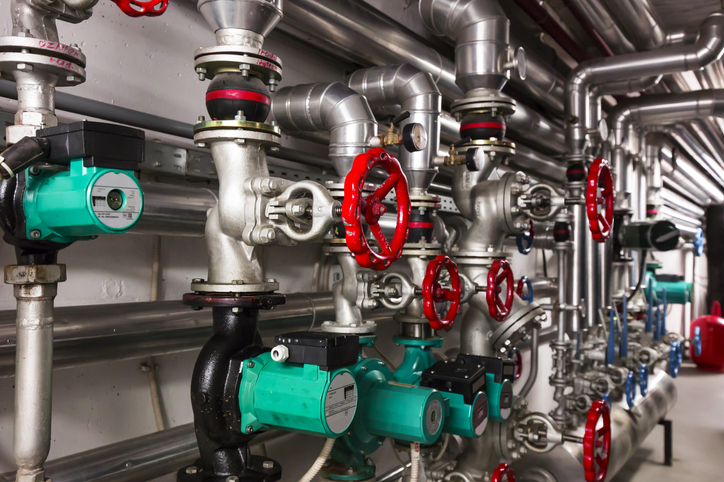High temperature valves refer to industrial valves that have the capacity to perform at significantly high temperatures. They can do this because manufacturers design them using durable and versatile metallic materials, which have extremely high melting points. In this article, we review the properties of high temperature valves, their metal valve seats, and considerations of a high-temperature process.
Characteristics of High Temperature Valves
Unlike standard valves, high temperature valves have to operate continuously in severe environments where temperatures are usually in excess of 450℃. As a result, they need to have unique properties that ensure long-term functionality.
Heat Resistance
The primary characteristic of high-temperature valves is their ability to resist thermal degradation. This feature has a lot to do with the material from which they are fabricated. And the material selection depends the working temperature range of the valve. So, it is important for the working temperature not to exceed the maximum allowable temperature of the material according to ASME B31.3. Generally, valve manufacturers classify high-temperature valves into five temperature grades.
- Class PI: These valves operate within 425 and 550℃. Valve materials in this grade are based on CF8 in ASTM A351 standard, which is the equivalent of AISI 304 stainless steel. Typically they consist of approximately 18% chromium, 8% nickel, and some rare earth titanium.
- Class PII: This temperature class refers to valves operating within 550 and 650℃. The materials used for this grade are similar to the Class PI, but usually have wear-resistant lining on some parts of the valve. Typical application of this grade is in heavy oil catalytic cracking units of refineries.
- Class PIII: This grade includes valves operating between 650 and 730℃.
- Class PIV: The Class PIV refers to high-temperature valves where the working temperature can get as high as 816℃.
- Class PV: Unlike previous grades where the focus is on the valve material, the Class PV grade valves use special design methods like heat insulation lining and cooling devices. They can operate in environments with temperatures exceeding 816℃.
Sealing Capability
Maintaining a tight seal is crucial in high-temperature applications to prevent leakage or loss of containment. Common seal materials like silicon rubber are limited to temperatures around 300℃, so they cannot serve in these applications. Metal-to-metal seals dominate at higher temperatures, but it is also common to see graphite and ceramic fiber in some applications. One key aspect in ensuring good sealing is noting the difference in the thermal expansion of valve parts, especially if their materials differ. This will help determine the working gap between valve parts and effectively reduce the sticking or rubbing between parts during temperature alternation. Doing this helps to sustain the long-term sealing capability of the valve.
Corrosion Resistance
High temperatures can expedite corrosion by accelerating the reaction rates of chemicals and moisture with valve materials. Also, these high temperatures can give rise to stress corrosion cracking. So, it is necessary to use corrosion-resistant materials for the valve from materials such as stainless steel, nickel-based alloys, and titanium alloys. Compatibility of the valve material with the flow media is another important consideration. For example, Inconel alloy serves well when the media has high concentration of chloride. Chemical fertilizer plants often utilize Inconel 600 or Inconel 625 alloy for their high-pressure and high-concentration oxygen valves. NACE MR0103 guides material selection when hydrogen sulfide is present in flow media.
High-Temperature Metal Valve Seats

Valve seats are key components as they play an important role in regulating flow and maintaining a seal. Because they come in contact with the flow media, they require a robust design to maintain functionality. In high-temperature applications, metal valve seats dominant over traditional elastomeric seals, due to the following advantages:
- Temperature Resistance: Metal valve seats are inherently resistant to high temperatures, ensuring consistent performance and sealing integrity.
- Durability: Metal valve seats can withstand prolonged exposure to high temperatures while minimizing the risk of degradation or failure.
- Robust Sealing: The rigid nature of metal valve seats enables a tight seal under high-pressure and high-temperature conditions. Thus, it reduces the likelihood of leakage or fugitive emissions.
Valve Seat Considerations
Because a valve seat is in constant contact with flow media, there are some measures necessary for ensuring long-term performance.
- Valve and Seat Design: The buildup of deposits around the valve seat is common in most valves. However, this should be avoided in high-temperature applications. This is because the deteriorating impact of valve deposits could be a lot more at high temperatures. Thus, the valve surface needs to be smooth and the valve should be self-cleaning in its operation. Having a valve design that allows for easy access for maintenance is also good for high-temperature applications. For example, a three-piece valve assembly allows for the valve body to be easily removed while the end connections remain in line. This allows for testing after repair and quick integration back to service.
- Surface Treatments and Coatings: Depending on the working temperature, a valve seat could need some surface treatment or coating. For example, hard chrome plating, which has a low coefficient of friction and self-lubricating properties, can serve in applications up to 1,000℃. Others like tungsten carbide and Stellite can thrive in applications up to 538℃.
Additional Considerations for High-Temperature Valves
Although material selection, surface treatment, and coatings are important in the design of high-temperature valves, there are other considerations for ensuring efficiency and safety of the system.

- Heat Management: Effectively managing heat within the process environment is necessary to mitigate thermal stress on equipment and personnel. Moreover, implementing insulation, heat shields, or cooling systems helps regulate temperatures and minimize the impact of heat on surrounding infrastructure.
- Redundancy and Contingency Planning: Despite the robust system design, it is necessary to still incorporate redundancy into critical valve networks. Also, it is important to establish emergency procedures to reinforce preparedness and mitigate potential risks.
- Monitoring and Control Systems: Deploying advanced monitoring and control systems enables real-time tracking of key performance indicators. Some of these key indicators include temperature, pressure, valve operation, and flow rate. Having automated control systems equipped with fail-safe mechanisms enhances operational efficiency while minimizing reliance on manual intervention.
- Safety Protocols and Training: Providing comprehensive training on equipment operation, emergency procedure, and hazard awareness empowers personnel to respond effectively, and safeguard against potential threats.
- Regulatory Compliance: High-temperature processes require adherence to regulatory requirements and industry standards to ensure integrity, reliability, and safety. Regular audits, inspections, and compliance assessments help foster continuous improvement in operational practices, and validate adherence to regulations.


Recent Comments